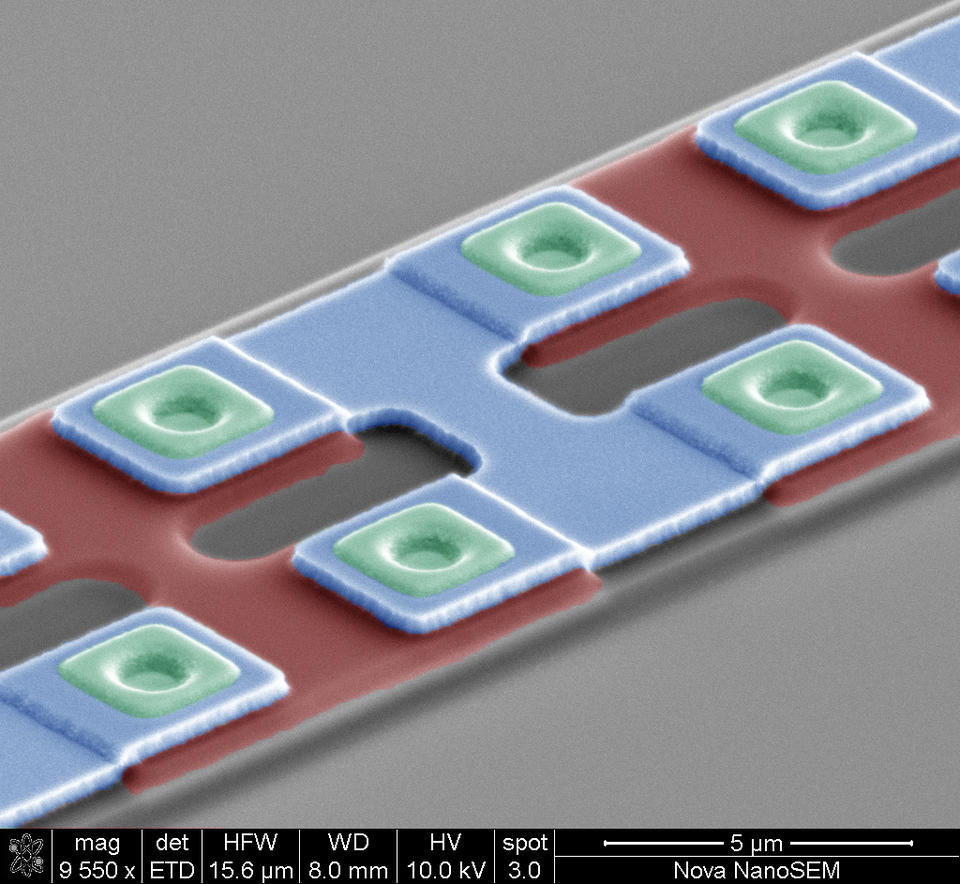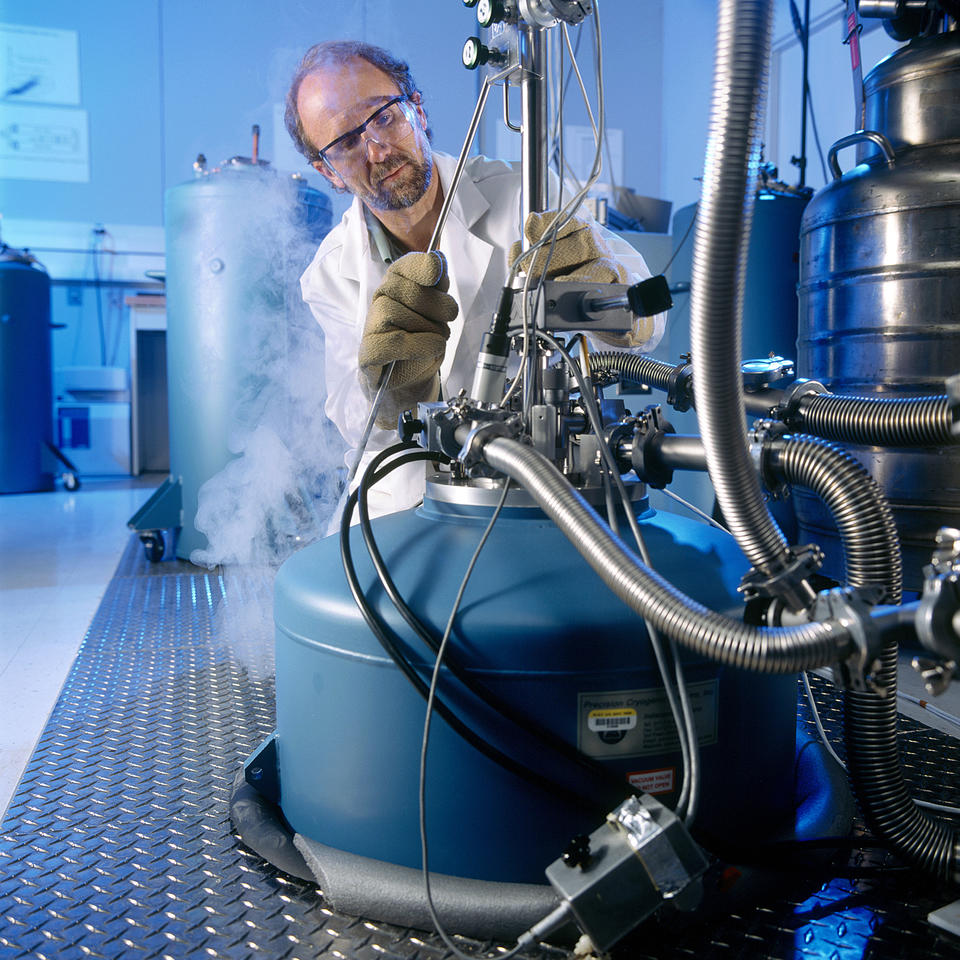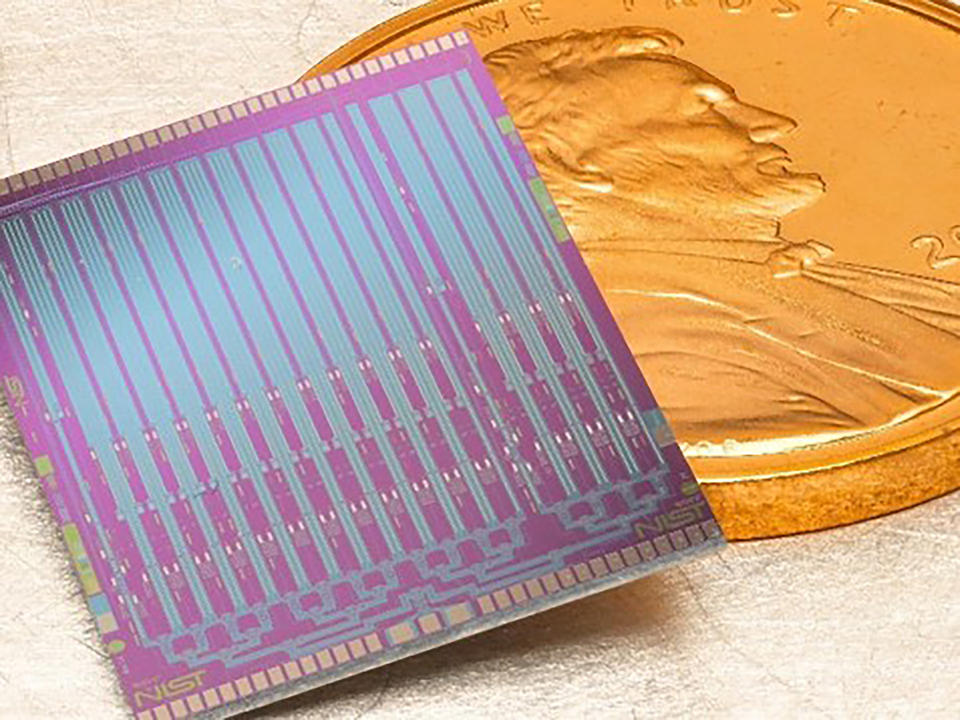Ampere: The Quantum Metrology Triangle
Electric current, voltage and resistance are quantities we experience in everyday life, from power lines to wall outlets. And in many applications, they can be described adequately by the 19th-century laws of classical physics.
But does their time-honored interrelationship, described so succinctly by Ohm’s law, remain true even in tiny physical systems, ones that operate according to the strange rules of quantum physics? Finding out will require experiments in which voltage, resistance and current are all exactly defined according to the principles of quantum mechanics.
Before 2019, these experiments were possible in practical terms for the volt and the ohm. Although both were derived from other SI units according to their formal definitions, their actual magnitudes were based on two quantum electrical phenomena that depend on fundamental constants.
One is the Josephson effect, predicted by physicist Brian Josephson half a century ago, and confirmed shortly thereafter. It occurs when two superconducting electrodes are separated by a tiny gap or barrier. (That configuration is called a Josephson junction.) In ordinary electric conductors like metal wires, current only moves when pushed along by a voltage. In superconductors, however, current can flow across the barrier in the absence of any applied voltage, thanks to interactions between pairs of electrons governed by the rules of quantum mechanics.

But if a superconducting junction is exposed to electromagnetic radiation such as microwaves, then a “quantized” voltage develops across the junction that is proportional to the frequency of the radiation. That proportion is expressed by the Josephson constant KJ = 2e/h, where e is the elementary charge and h is the Planck constant. “Quantized” means that only specific values of voltage can exist, proportional to those constants, instead of a continuous range of values.
Because radiation frequency can be controlled with extraordinary precision, a Josephson junction can produce exact levels of voltage, with uncertainty in the range of 6 parts per billion. Not surprisingly, Josephson voltage standards have become the de facto universal tools for calibrating voltage measurements.
The other phenomenon is the quantum Hall effect: When a current of ultracold electrons — so thin that it is, in effect, a two-dimensional sheet — is exposed to a magnetic field perpendicular to the sheet, electrical resistance across the width of the current stream develops in exactly quantized steps. The magnitudes of those steps are described by the von Klitzing constant (RK = h/e2), named after physicist Klaus von Klitzing and known to an uncertainty of 2 parts in 10 billion. The quantum Hall effect is the world standard for resistance calibration.

The values of the Josephson and von Klitzing constants were initially determined by experiment. But the constants are so important to electrical metrology that in 1990 they were incorporated into the SI as “conventional” units — that is, their values are now exactly fixed by international consensus with zero uncertainty.
And therein lies the roots of a strange situation. The standard values of the volt and ohm existed in some sense outside of the SI. They depended primarily on values of constants different from the ones upon which the redefined SI is based.

In the 2019 SI redefinition, however, that changed immediately. KJ and RK are now defined in terms of h and e — both of which have been assigned exact fixed values. Therefore, KJ and RK now also have exact “true SI” values instead of the conventional 1990 values.
Now that the ampere is redefined in terms of e, all three components of Ohm’s law are finally formally interconnected by only two fundamental constants: h and e. Scientists are now able to use the Quantum Metrology Triangle (Ohm’s law in quantum terms) to check the values of current, voltage and resistance by using any two units to determine the value of the third. That can reveal, for example, whether the Josephson constant really is exactly equal to 2e/h. Any discrepancies would have a major impact on electrical metrology — not to mention quantum theory itself.

